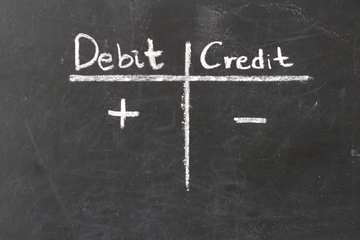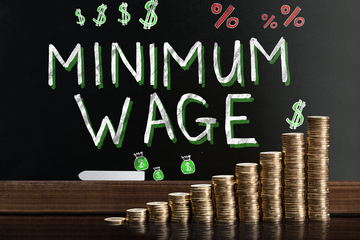The importance of your credit score can't be overstated. Lenders, employers, apartment landlords, and retailers use your credit score to determine eligibility. A high credit score can open many doors and serve your financial needs for several years. One way to potentially establish or improve your credit score is by using a secured or unsecured credit card. And if you have a credit card, you must understand how credit card interest works. Let's take a closer look at how credit card interest works.
Key Takeaways
- For most credit cards, the interest rate and annual percentage rate (APR) are the same. This may not be the case with other types of loans.
- Many credit cards will have different interest rates for different transactions or periods, such as cash advance rates, balance transfer rates, promotional rates, and penalty rates.
- Variable-rate APRs can change based on specific indexes, while fixed-rate APRs remain the same.
- Many credit cards offer a grace period when you can avoid paying interest on your balance.
What Is Credit Card Interest?
Generally, interest is the compensation a lender receives for lending money. Interest is the price for borrowing money from the credit card issuer. Most credit cards express interest rates as a yearly rate or the annual percentage rate (APR). With credit cards, the terms "interest" and "APR" are usually used interchangeably. More so, the credit card's APR and interest rate are usually the same. However, APR and interest rates may be different for other types of loans.
How Does Credit Card Interest Work?
When you purchase goods or services with your credit card, you utilize proceeds from a pre-approved loan or line of credit. As the cardholder, you agree to repay the lender the amount borrowed and any interest or fees. The dollar amount of interest you repay is based on how much you borrow within the period — typically a month. For example, if your credit card has a limit of $2,000 and you used $375 in a month, interest would only be charged on the amount you've used in the period, which would be $375.
Many credit cards will have different interest rates for different transactions or situations. For everyday purchases, credit cards charge a standard purchase APR. But there are other types of interest rates you should know.
- Promotional interest rates attract new credit card users. Some credit card issuers will offer special introductory APR for a select period, such as 0% APR on purchases for 12 months. Make sure you understand when the promotional APR period ends.
- Cash advances are when you use your credit card to withdraw cash against your available credit line. Credit cards often charge a higher APR for cash advances.
- Balance transfers involve moving credit card debt from one credit card to another. When done strategically, balance transfers can help you pay off debt faster, consolidate debt, and save on interest. Credit cards may offer a different APR on balance transfers.
- The penalty APR may apply when you miss payments, make late credit card payments, or exceed your limit.
Variable vs Fixed Credit Card Interest Rates
The majority of credit cards utilize a variable-rate APR. Variable APR can change over time based on a specific index. On the other hand, a fixed-rate APR doesn't change based on the index. If a fixed-rate APR does change, the lender has to notify you beforehand.
When Do Credit Cards Charge Interest?
If you spend $500 of your $2,000 credit limit on the 1st of the month and pay the balance in full on the 16th before your billing cycle ends, you may not pay interest. Most credit cards charge interest on balances you fail to pay by the due date. If you carry a balance over every month, you will pay interest on the entire balance.
Many credit cards also offer a grace period of around 21 days. The grace period tends to start from the date your monthly statement is generated to the day your payment is due. During your grace period, you can avoid paying interest if you pay your entire balance by the due date. However, credit card companies are not required to give a grace period.
How to Calculate Credit Card Interest?
Calculating your credit card interest is relatively easy and can be done in three steps:
- Look at your statement and find your current APR, which may be on the back. You should also find the balance on your credit card statement.
- Because your APR is annualized, you will divide it by 12 to calculate your monthly periodic rate. You can also calculate your Daily Periodic Rate (DPR) by dividing your APR by 365.
- Multiply your monthly interest rate by the amount of your balance.
For instance, if your APR is 24.99% and you owe $1,000 on your credit card throughout the month, the first step is to calculate your monthly APR. To do so, divide your APR of 24.99% by 12, which equals about 2.08%. Now multiply your balance of $1,000 by 2.08% for a monthly interest charge of $20.80. The monthly interest charge may differ slightly based on the number of days in the month.
By calculating your monthly APR, you can better understand the impact of debt. It can help inspire and motivate you to pay off your debt during the grace period and consider whether the purchase is worth it.
What's the Difference Between Interest and APR?
For many credit cards, APR and interest rates are the same and used interchangeably. However, this isn't the case for other loans. With mortgages, for example, the interest rate refers to the annual cost of the loan as a percentage. But the APR includes the interest and other fees, such as:
- Closing costs,
- Mortgage insurance,
- Discount points, and
- Loan origination fees.
The APR will typically be higher than the interest rate on mortgages and other types of loans. If you're considering mortgages or other lending products, it's best to focus on the APR. The Federal Truth in Lending Act requires all consumer loan agreements to express the costs in terms of APR. Because every lender must adhere to these rules, you can use APR as a fast and precise way to compare lending costs across lenders.
Can You Avoid or Reduce Credit Card Interest Rates?
Avoiding or reducing the amount you pay in credit card interest starts with your credit score. People with higher credit scores may qualify for credit cards with lower interest rates, which can help reduce your overall costs. If your credit score is high enough, you may qualify for a promotional 0% APR offer. Other ways to avoid or reduce credit card interest include:
- Pay your balance entirely every cycle to avoid paying interest on your purchases.
- Avoid making late or missing payments because it can trigger a higher interest rate.
- Avoid taking cash advances on your credit card. Unlike when you make regular purchases, many credit cards do not offer a grace period on cash advances. Because of this, it's vital to repay the cash advance as soon as possible to minimize your interest costs.
- Consolidate debt by using a balance transfer credit card. If you have a credit card with a balance, you may be able to avoid paying interest on it by transferring the balance to a new credit card with a promotional offer, such as 0% APR.
The Bottom Line
Understanding how credit card interest works and being able to answer questions like "When do credit cards charge interest?" is vital to your financial health. By knowing how interest works, you'll be better prepared to avoid paying it or minimize the amount you pay.
Sources
- Should I Get a Credit Card? Here's Why or Why Not
- How To Build Credit With A Credit Card – Forbes Advisor
- What is a credit card interest rate? What does APR mean? | Consumer Financial Protection Bureau
- How Does Credit Card Interest Work? | Capital One
- What Is a Cash Advance on a Credit Card? | Capital One
- What is the difference between a fixed APR and a variable APR? | Consumer Financial Protection Bureau
- If I pay off my credit card balance when it is due, is the company allowed to charge me interest for that month? | Consumer Financial Protection Bureau
- How Does Credit Card Interest Work? | Chase
- What is a grace period for a credit card? | Consumer Financial Protection Bureau
- How To Use Your Grace Period To Avoid Paying Interest | Bankrate
- How to Avoid (and Reduce) Credit Card Interest: Best Strategies | TIME Stamped



